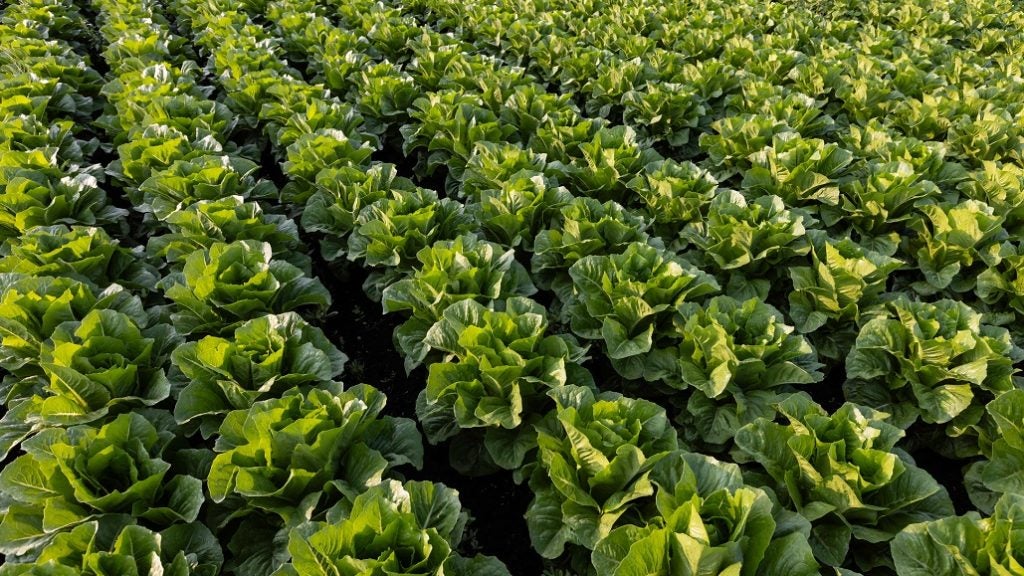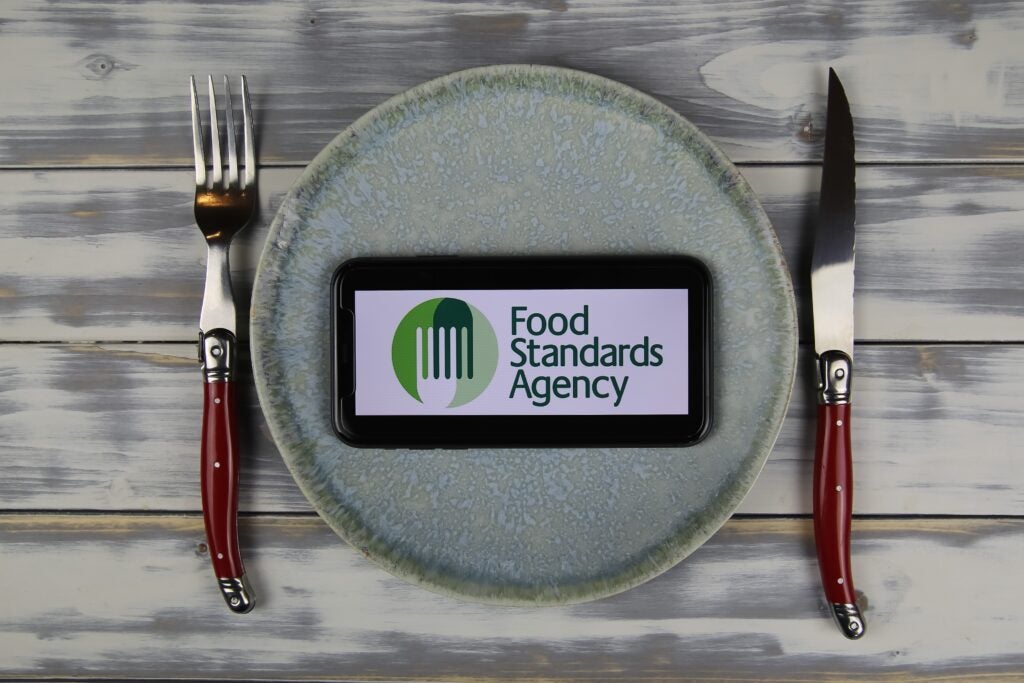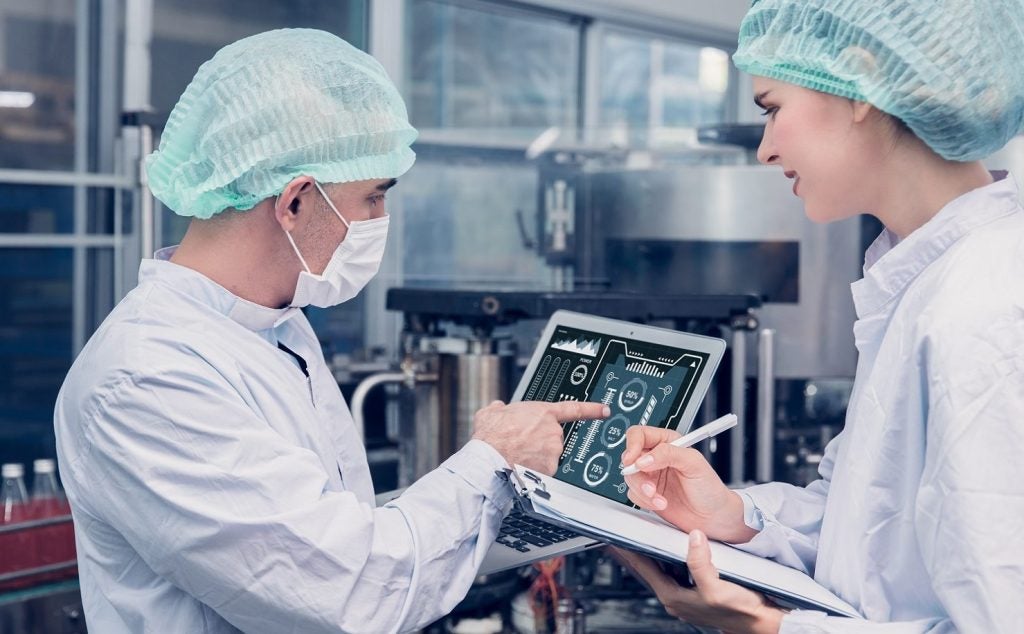Food companies have been quick to adopt AI and take advantage of the purported benefits the technology delivers. Many are already using AI and machine learning in their manufacturing operations and supply chains in a bid to achieve efficiency gains. However, one area where – to date at least – AI technology has made limited inroads is food safety.
The fact AI has seemingly struggled to gain traction is surprising when you consider humans – and indeed machines – who are tasked with fulfilling many food-safety roles are not infallible. Those who champion AI claim the technology is effectively bullet-proof and could significantly cut down on errors.
In an article published in US journal Annual Review of Food Science and Technology in 2023, four academics at Cornell University in the US said the “possible AI applications are broad” and include – but are not limited to – food safety risk prediction and monitoring, as well as food safety optimisation throughout the supply chain”.
The academics – Chenhao Qian, Sarah Ingersoll Murphy, Renato Orsi and Martin Wiedmann – also suggested “improved public health systems; for example, by providing early warning of outbreaks and source attribution; and [the] detection, identification, and characterisation of foodborne pathogens”.
Research published last year by UC Davis in California said a technique using AI and optical imaging on romaine lettuce could “quickly and accurately identify bacteria in food, making it a promising approach for preventing foodborne outbreaks and illnesses”.
But, given the benefits advocates of AI say the technology will deliver on food safety, why has its take-up been so slow? Are there specific areas where AI could potentially make a significant difference?
Slow adoption of AI
The academics behind the Annual Review of Food Science and Technology article said AI technologies in food safety “lag behind in commercial development” when compared to areas such as agricultural production or marketing. They pointed to “obstacles such as limited data sharing and limited collaborative research and development efforts”.
Finding examples of major food companies that are already using AI for food-safety reasons and that are willing to talk about the technology is not easy.
Of the companies Just Food approached for comment, one large European group confirmed it is working with AI in the area but added it was too “premature” to comment.
Another global food group says that although it uses AI in its supply chain and manufacturing operations, it is not looking to use the technology on food safety at the moment.
As for global food behemoth Nestlé, a spokesperson for the company says AI and machine learning are helping the business to advance and accelerate its decision-making in different areas.
“For example, we've developed artificial intelligence tools that use ‘big data’ in real time from a variety of sources, to identify and target potential risks in our supply chain while accounting for the origins and the nature of raw materials,” explains the spokesperson.
And a spokesperson for fellow chocolate major Lindt & Sprüngli spokesperson says: "We are closely observing the development of AI tools in the area of food safety, but are currently not at liberty to disclose any further details."
Some applications are rising but [they] are still facing massive roadblocks.
Amine Raji, Spore.Bio
But, for the time being at least, the adoption of the technology to work on food safety appears to have been relatively sluggish and, according to food industry experts, the reasons are varied.
“Some applications are rising but [they] are still facing massive roadblocks such as change management, resilience to new tools or connectivity issues in factories,” explains Amine Raji, founder of France-based Spore.Bio, a company that uses machine learning to identify pathogens.
Early use cases
Abhinav Agrawal, global co-leader of AI monetisation at consultancy AlixPartners, says he has seen a few clients experiment with the use of AI in the area of food safety but it is still at a very early stage.
“A couple of pilot use cases include AI-powered cameras and sensors to monitor hygiene practices, such as hand washing and equipment sanitation. AI systems analyse data in real-time to ensure compliance with food safety protocols and detect any deviations that could lead to contamination,” he explains.
“[Another pilot use is] AI models that predict foodborne illness outbreaks, optimise food inspections and improve the traceability of food products through advanced data analytics.”

Raji, who previously worked for Nestlé, says he is also seeing some companies starting to explore the use of AI-based quality-control analysis.
“We can usually see these solutions first being adopted in higher value-add processing industries such as pharma, cosmetics, or medical fields before starting to penetrate the food and beverage market,” he says.
Suzanne Livingston, a vice president at IBM, says she is seeing companies leverage generative AI to improve supply chain accountability and compliance.
“This opens an era in food focused on solving some of the most urgent problems: contamination, recalls and compliance failures. This in turn can unlock savings, protect a company’s reputation and drive sustainability,” she says.
Another area where AI could potentially make a major difference in relation to food safety surrounds data management, according to Raji.
“Quality managers have decisions to make based on thousands of data points and, today, most of them are still paper-based and hard to integrate,” he says. “AI will be able to completely change this paradigm and allow them to process this data and make sure that all the products are safe when they are shipped out of factories.”
As the technology is still in its relative infancy in terms of its use by food groups in the area of food safety it is potentially too early to say where the biggest gains will ultimately be made.
But what is starting to become clear is the benefits that AI and machine learning potentially offer users. Two of the key benefits are the speed and efficiency at which AI technology can operate.
Take the example of Spore.Bio. The company has developed a novel bacterial detection system that uses AI to replace long and complex traditional methods that have previously been used by food manufacturers.
“These methods take on average five days while our technology takes a few minutes, with the same level of reliability,” Raji says. “It allows manufacturers to then spot way more efficiently and quickly any contamination risk and in turn avoid food recalls.”
Trials among regulators
What is also interesting to note is some regulatory bodies are also exploring the use of AI and machine learning in the area of hygiene and food safety.
Last year, the UK’s Food Standards Agency (FSA) announced it had developed a proof of concept AI solution to help local authorities use their limited resources more efficiently in the area of food hygiene.
At the moment the food hygiene rating process is manual, labour intensive and inconsistent across local authorities but the FSA’s Strategic Surveillance Service – a data science team that develops tools and techniques to “turn data into intelligence”, using machine learning and AI – developed the Food Hygiene Rating System - AI (FHRS AI).

The aim of the proof of concept tool was to support local authorities to prioritise which businesses to inspect in the first instance by predicting which establishments might be at a higher risk of non-compliance with food hygiene regulations. In the end, the FSA decided not to put the tool into use “owing to multiple reasons and competing priorities”.
But, given the FSA has already started to explore the use of AI technology in this area, it appears that it is only a matter of time before a regulatory food body starts to roll out AI and machine learning in the area of food safety to streamline processes and improve efficiencies and detection rates.
Many food industry experts believe it is also only a matter of time before more manufacturers move beyond the experimentation and pilot phase and widely implement AI to improve their own food safety processes and protocols.
However, there is one caveat. Although many food manufacturers are already benefitting from the deployment of AI in different parts of their business, AlixPartners’ Agrawal believes the adoption of AI in the area of food safety could ultimately be limited, not because of technology reasons, but due to regulatory issues.
“Companies and humans limit exposure to regulatory fines in the case of human errors,” he explains. “However, fines in the case of machines/AI can be much higher due to the 100% accuracy expectation.”
It is a point that will no doubt give companies considering implementing AI in the area of food safety pause for thought.
Fundamental impediments
For the academics at Cornell University, there were “multiple factors” holding back the use of AI for food safety – and the perception of risk within businesses, they argued, was fundamental.
There may be concerns AI tools, if available to others, could be used to predict whether a specific company has an increased food safety risk.
Cornell University academics
“One key reason seems to be the limited availability of data that are needed to develop and implement AI tools for food safety applications,” they wrote. The length of time it takes to collect microbial data and the cost of doing so, combined with concerns within the industry “about data privacy and the business and reputational risk that may be associated with data sharing” was hampering the application of AI for food safety, the academics argued.
“In some cases, there may be a reluctance from food industry stakeholders to develop and adopt food safety AI technologies because of a fear that these tools might negatively impact their business interests,” they said. “This concern is not just limited to the data sharing that may be required but may also extend to concerns that AI tools, if available to others, could be used to predict whether a specific company has an increased food safety risk.”
When you add into the mix two other factors raised by the Cornell academics – the challenge of standardising data from different sources and the broader lack of a regulatory framework regarding AI – and it’s easy to understand why, so far, the use of the technology on food safety has been slow.









